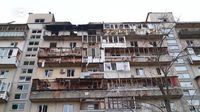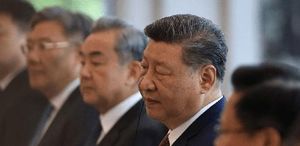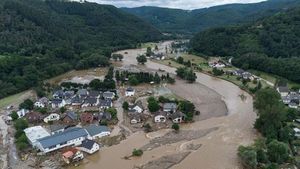On March 23, 2025, Kiev faced another crisis as Russian drone strikes caused significant destruction and loss of life. Two people were confirmed dead after the attacks ignited fires across the city, a harrowing reminder of the ongoing conflict.
The attack occurred in the early hours of the morning, a time when many civilians were still at home, leading to increased concerns about the safety of residents in the capital. The relentless assault on Ukrainian territory raises questions about the feasibility of lasting peace amidst a backdrop of increasing hostilities.
As officials grapple with the aftermath of this latest attack, how can the international community respond? Ukraine's peace initiatives have been continually undermined by the barrage of attacks, leaving many skeptical about the potential for a permanent ceasefire.
Adding to the uncertainty, discussions of potential involvement by China as a peacekeeper have emerged. The question hangs in the air: can an external power effectively mediate in such deeply entrenched conflict? While previous attempts have often foundered, the possibility of fresh diplomatic intervention could turn the tide, provided there is a genuine willingness from both sides to engage.
The situation in the Donetsk region further complicates the narrative. A correspondent from DW recently reported live from the area, illustrating the dire realities on the ground. Local residents continue to live in fear, completely dependent on humanitarian aid and fleeing violence in search of safety.
In an interview with German journalist Dirk Emmerich, the ongoing ramifications of the war were explored. Emmerich emphasized the profound challenges that lie ahead for both Ukrainians and the wider European community as they navigate this period of uncertainty and upheaval. He noted, "The humanitarian impact of this conflict stretches far beyond the geographic boundaries of Ukraine, affecting European stability."
As authorities work to provide aid and restore normalcy, questions linger. What measures will be taken to prevent further strikes? Are there sufficient protective measures in place to safeguard civilian lives? How can international support be leveraged to assist those who remain marginalized and vulnerable in this ongoing crisis?
Despite the bleak circumstances, there are calls for renewed conversations between Ukraine and peace advocates around the world. There is a palpable urge among citizens yearning for stability, with a powerful narrative emerging from the rubble of destruction, resilience in the face of despair.
The fires caused by the drone strikes serve not only as a tragic reminder of the day’s events but as a symbol of hope that one day, peace will illuminate a region long consumed by conflict. As the world watches, what steps will be taken to ensure that history does not repeat itself?
In conclusion, Kiev remains under siege while international efforts to broker peace continue to stall. The fate of the city and its people hangs in the balance, illustrating the urgent need for effective intervention that can bring a sustainable end to the fighting.





